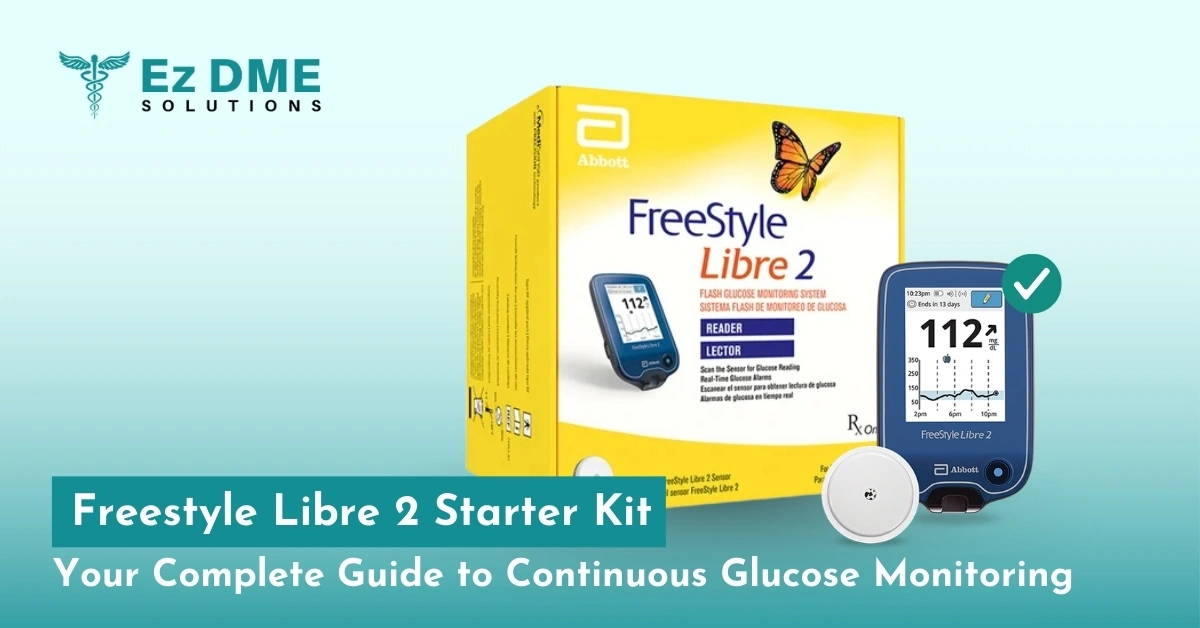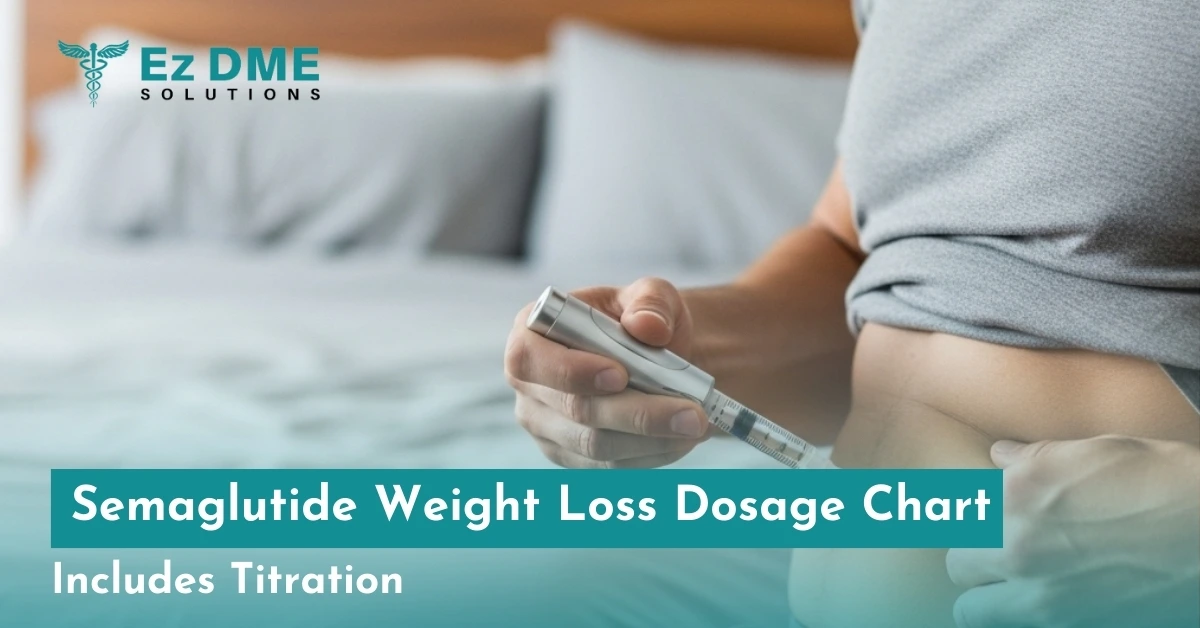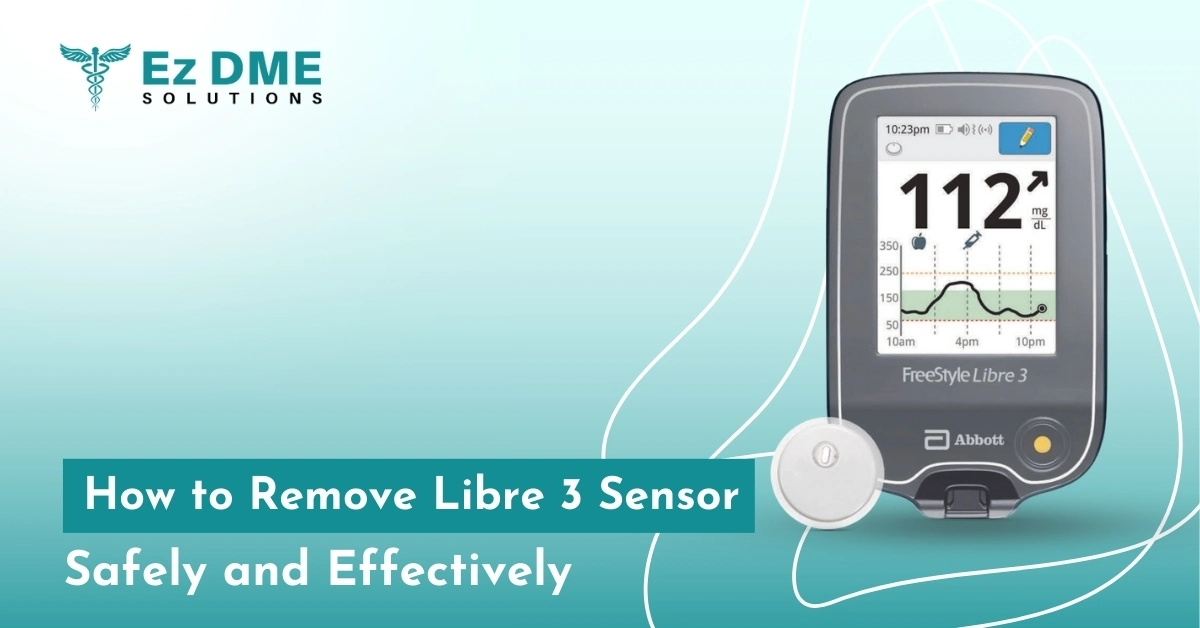No products in the cart.
Can Dexcom G7 Be Worn on Abdomen? Pros, Cons, and Guidelines
Many new CGM users ask: Can Dexcom G7 Be Worn on Abdomen? This is not just a comfort matter; it’s a critical component in maintaining glucose monitoring accuracy. In insulin-dependent diabetic patients, accurate Dexcom G7 sensor placement guarantees high-quality glucose information, reduces unnecessary alarms and treatment errors.
Poor placement can result in spurious readings, signal loss, or false hypoglycemia alarm activation. Such complications can result in overcorrection or delayed insulin infusion, thus causing serious health complications.
In this blog, we guide every user through clinically approved Dexcom G7 wear sites, including instructions on how and where to apply the sensor safely. Awareness of whether the Dexcom G7 can be worn in the abdomen and how to wear it correctly provides optimal CGM performance. Worn correctly, the Dexcom G7 provides accurate, consistent data necessary for safe, effective diabetes care.
Dexcom G7 FDA Approved Sensor Sites by Age Group:
The Dexcom G7 is an FDA-approved continuous glucose monitoring (CGM) system designed specifically for real-time glucose monitoring in pediatric and adult populations. The approved wear sites, however, differ based on the age of the user for the sensor to work optimally and safely.
- In people aged 18 years and older, the FDA now clears sensor placement on the abdomen and the back of the upper arm. Both are clinically proven to be accurate, stable, and provide consistent signal transmission. Adults can opt for either of the sites depending on comfort, lifestyle, and individual preference for insertion.
- 2 to 17 years, there is just one FDA-approved sensor site, and that is the back of the upper arm. The abdomen is not approved for pediatric use. Due to thinner subcutaneous tissue and increased activity in children, placing the sensor on the abdomen may lead to compression lows, data inconsistency, or signal dropout.
- For 2 to 6 years, another recommended site for Dexcom G7 is, buttock.
Using non-approved sites, especially in pediatric patients, can compromise glucose accuracy and should be avoided.
Key Advantages of Abdominal Placement of Dexcom G7:
- Easier self-application without assistance
- Fewer signal disruptions during routine movement
- Stability under clothing, if placed correctly
When applying the sensor to the abdomen:
- Maintain a 2-inch distance from the navel
- Avoid scar tissue, tattoos, or moles
- Select a flat region with soft tissue
- Do not place under belts or tight waistbands
Abdomen vs. Back of Arm: Clinical Considerations:
Patients choosing between the abdomen and the back of the arm sites often need to consider insertion ease, lifestyle, and glucose variability. Here’s how the two compare:
| Factor | Abdomen | Back of Arm |
| FDA-approved for | Adults only | Adults and children (2+) |
| Self-insertion | Easy | May require assistance |
| Stability during sleep | Variable | Often more stable |
| Risk of compression lows | Lower (with spacing) | Higher (if sleeping on an arm) |
Both sites show consistent glucose tracking accuracy, provided the sensor is inserted according to Dexcom guidelines.
Pediatric Considerations: Why Abdominal Use Is Restricted
For children aged 2 to 17 years, Dexcom specifically recommends wearing the sensor on the back of the upper arm. Using the abdomen in this age group is off-label and may lead to:
- Inadequate subcutaneous fat layers
- Frequent physical activity or rolling
- Greater chance of compression-induced false readings
Parents should follow the child-specific instructions provided by Dexcom or consult a pediatric endocrinology provider for site evaluation.
Clinical Data on Abdominal Accuracy in Adults:
A 2022 study, which was submitted with the G7 application, monitored thousands of wear sessions with an abdomen sensor in adults. The results confirmed:
- MARD (Mean Absolute Relative Difference) of ~8.2%, indicating reliable performance
- Less than 1.5% signal loss across a 10-day wear period
- High correlation between CGM and capillary fingerstick values
These outcomes confirm that abdominal placement provides dependable results when sensors are correctly inserted.
How to Wear Dexcom G7 on Abdomen: Step-by-Step:
Follow these steps to apply your sensor properly to the abdominal region:
- Wash hands thoroughly.
- Clean the site using an alcohol prep pad.
- Let skin fully dry to promote adhesive strength.
- Place the sensor a minimum of two inches from the navel
- Avoid placing it over hair, old scars, or tattooed skin.
- Utilise the included overpatch to secure the sensor, particularly during physical exercise or bathing.

Wear-Time Cautions:
- Do not wear the sensor under tight-fitting garments.
- Avoid muscular zones that flex or fold.
- Change your sites every ten days so the skin has time to heal.
When to Avoid the Abdomen for Dexcom G7
Though the FDA clears the device for adults, the abdomen isn’t always the best for:
- Pregnancy: expanding skin can loosen the sensor and raise edges.
- High-impact movement (e.g., core workouts, yoga): Motion during exercises may dislodge the sensor.
- Stomach sleeping: Pressure during sleep can cause “compression lows”.
- Repeated site failure: If you’ve experienced dropouts or inaccurate readings on the abdomen, consider switching sites.
When necessary, choose the back of the upper arm, which also offers excellent accuracy and performance.
Why Proper CGM Wear Site Matters
The question of can Dexcom G7 can be worn on the abdomen is more than a technical issue—it’s about data integrity. Improper placement may result in:
- Incorrect glucose trend data
- Unjustified insulin dosing adjustments
- Nuisance alarms or sensor errors
- Skin irritation or sensor loss
Using approved Dexcom G7 wear sites ensures better blood sugar control, fewer complications, and peace of mind.
Placement Myths vs. Evidence
There are several misconceptions regarding Dexcom G7 sensor wear:
Myth: Abdomen placement is outdated or less accurate
Fact: Dexcom clinical trials validate abdominal wear for adults with <9% error margin.
Myth: Only athletes or lean users should avoid the abdomen
Fact: Site choice depends on skin tension, not body type alone. Flat, fatty areas perform better.
Myth: Sensors on the abdomen always peel off early
Fact: Using alcohol wipes and overpatches significantly improves wear time stability.
Key Takeaways on Abdominal Wear
- Can Dexcom G7 be worn on the abdomen? Yes, for adults 18+ only.
- FDA-cleared, manufacturer-verified, and clinically proven.
- Insert a minimum of 2 inches from the navel on flat skin.
- Do not use the abdomen in children aged 2–17.
- Rotate insertion sites and monitor skin response.
- Contact your care team if the wear site causes persistent irritation or dropouts.
Conclusion: Correct Placement Drives CGM Success
Abdominal placement of the Dexcom G7 is a clinically validated and effective option for adults, offering accurate and dependable CGM performance when applied correctly. By following proper site preparation and Dexcom’s approved wear guidelines, users can reduce signal issues, false alerts, and glucose variability.
With the right support and education, managing diabetes becomes more precise and reliable.
Buy Dexcom G7 today and take control of your glucose levels with confidence and clarity.





Leave a Reply